-

Jan
23
Interpretive Summary: Computer vision algorithms to help decision-making in cattle production
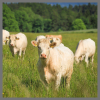
In recent years, integrating computer vision technologies into precision livestock farming (PLF) management systems have the potential to transform how cattle producers collect, monitor, analyze, and optimize animal production. Livestock production, particularly in cattle farming, encompassing beef and dairy under intensive and extensive production systems, faces numerous challenges ranging from optimizing feeding practices to detecting and managing diseases.
Read more
-

Jan
16
Interpretive Summary: Selenium deficiency modulates necroptosis-mediated intestinal inflammation in broiler through the lncRNAWSF27/miRNA1696/GPX3 axis
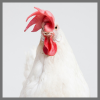
Intestinal inflammation caused by selenium (Se) deficiency is one of the causes of broiler diarrhea, which can harm the health of poultry. The addition of Se is the current method to relieve this problem, but it has not fundamentally resolved intestinal inflammation. Therefore, we are looking for new strategies to alleviate intestinal inflammation by studying the specific mechanisms underlying Se deficiency.
Read more
-

Jan
16
Interpretive Summary: Effects of maternal Cu, Mn, and Zn supplementation from different sources on physiological and productive responses of cows and their offspring

Trace minerals like Zn, Cu, and Mn play essential roles in fetal development, particularly in the formation of the nervous, reproductive, and immune systems. However, their bioavailability might differ depending on the source offered to the animals. This study investigated the impacts of different sources of trace minerals (hydroxychloride [HDX] vs. organic-complexed [ORG] vs. sulfate [INR]) on maternal and offspring responses.
Read more
-

Jan
16
Interpretive Summary: Pregnancy affects maternal performance, feed intake, and digestion kinetics parameters in beef heifers
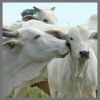
Gestation is a physiological condition characterized by a high demand for nutrients to support fetal development, particularly during the late stages of pregnancy. During this time, the ruminal capacity is limited due to the loss of space by the growing pregnant uterus, potentially affecting feed intake.
Read more
-

Jan
16
Interpretive Summary: Effect of multispecies fungal extract supplementation on growth performance, nutrient digestibility, ruminal fermentation, and the rumen microbiome composition of beef cattle fed forage-based diets
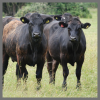
Enhancing the digestibility of fibrous feeds from cattle diets will benefit the productivity, efficiency, and sustainability of beef cattle operations. These experiments aimed to evaluate the effect of a multispecies fungal extract (MFE) on fiber digestibility and ruminal fermentation; and how these might be associated with growth performance in beef cattle. Diets (forage-based) were offered for ad libitum intake with or without the inclusion of an MFE.
Read more
-

Jan
16
Interpretive Summary: Evaluation of kernel processing and processor type in whole-plant sorghum silage: effects on nutrient digestibility and animal performance in backgrounding beef heifers
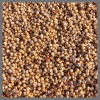
These 2 experiments evaluated the effects of feeding whole-plant sorghum silage (WPSS) with different kernel processing strategies on beef heifers’ nutrient digestibility and growth performance. In experiment 1, using 24 individually housed heifers, we contrasted 3 treatments: A) unprocessed (UNP), B) conventionally processed (CONV), and C) shredlage processed (SHRD) silage.
Read more
-

Jan
14
The Giving Herd - ASAS Foundation Newsletter - January 2025
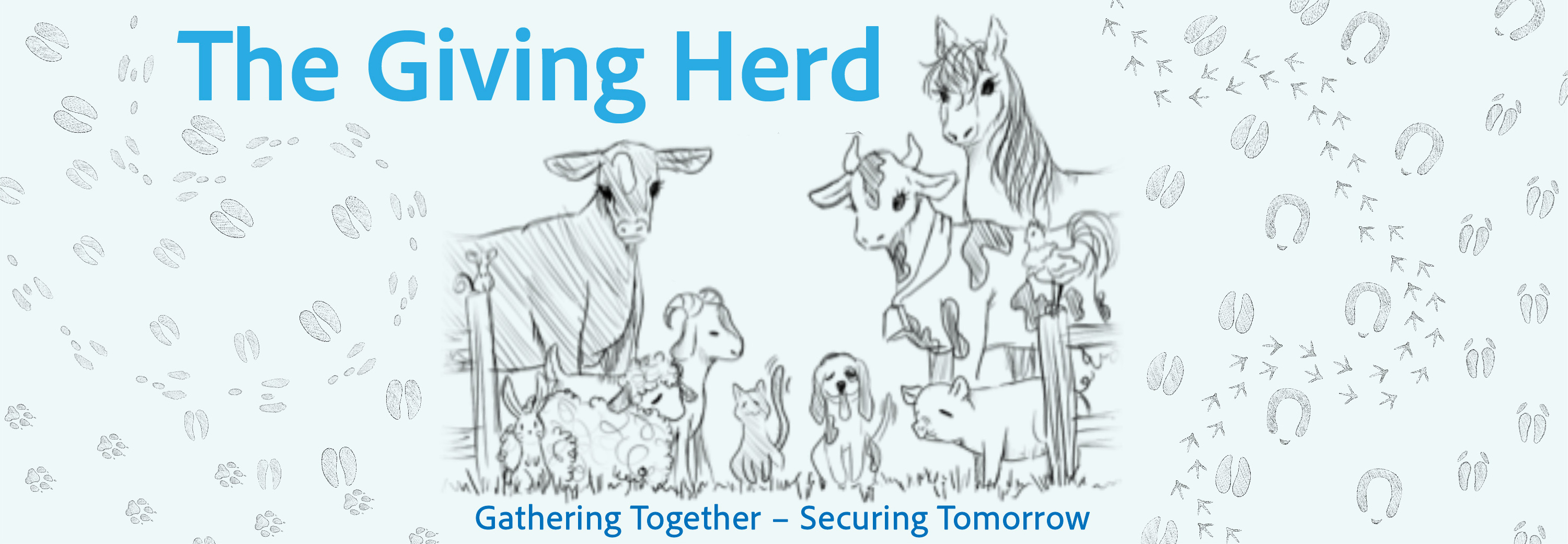
The January Edition of The Giving Herd, an ASAS Foundation Newsletter
Read more
-

Jan
13
Meet Paisli Ivey - 2025 D.C. Animal Agriculture Policy Intern

Meet Paisli Ivey - 2025 D.C. Animal Agriculture Policy Intern
Read more
-

Jan
09
Interpretive Summary: Effects of cashew nutshell extract inclusion into a high-grain finishing diet on methane emissions, nutrient digestibility, and ruminal fermentation in beef steers

In the near future, the U.S. beef industry will face the challenge of meeting a significant increase in global demand for beef, which could contribute to an increase in methane emissions from livestock. To mitigate methane (CH4) emissions, the use of plant secondary metabolites, such as anacardic acid found in cashew nutshell extract (CNSE) has been explored.
Read more
-

Jan
09
Interpretive Summary: Effect of second iron injection on growth performance, hematological parameters, and fecal microbiome of piglets fed different dietary iron levels
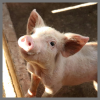
The study evaluated the effects of a second iron injection given to suckling pigs at 7 to 8 d of age after receiving an initial injection at 2 to 3 d of age and fed diets containing different dietary iron levels in the nursery period on growth, hematological characteristics, serum and liver trace minerals, and fecal microbiome.
Read more
-

Jan
09
Interpretive Summary: Graded supplemental choline chloride fed throughout the grow and finish periods elicited minimal influence on growth performance and carcass characteristics of pigs in a commercial setting
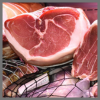
Supplemental choline has been shown to exert positive effects on growth performance and carcass characteristics in mammalian and avian species. However, limited research has focused on choline supplementation during the grow-finish period of pigs managed in a commercial context.
Read more
-

Jan
09
Interpretive Summary: Development of an indigestible dietary protein index to investigate the effects of dietary protein content in postweaned pigs
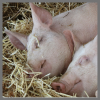
Increased dietary protein (DP) may predispose weanling pigs to health risks and reduced performance due to the negative effects on intestinal health and increased pathogen proliferation. However, since the negative impacts of DP are mostly due to the amount of protein flow into the hindgut, dietary indigestible dietary protein (IDP) content may better explain the potential effects of proteolytic fermentation on nursery pigs compared to DP.
Read more
-

Jan
09
Interpretive Summary: Impact of different feed intake levels on intestinal morphology and epithelial cell differentiation in piglets
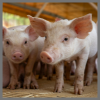
After weaning, the nutrient intake of piglets decreases significantly in the first few days due to changes in environment and diet. During periods of dietary decline, which results in villous atrophy, crypt hyperplasia, and expression of proinflammatory cytokines, piglets must adjust intestinal proliferation and differentiation to adapt to weaning stress.
Read more
-

Jan
06
Jim Lauderdale's ASAS Journey -"More 'moo' than math"

Jim Lauderdale's ASAS Journey
Read more
-

Jan
02
Interpretive Summary: Replacing sulfate with hydroxychloride sources of trace minerals modulated the growth performance and plasma indicators of inflammation and energy metabolism in beef heifers during periods of feed restriction...
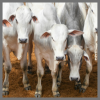
This study investigated how 2 sources (sulfate vs. hydroxychloride) of copper, manganese, and zinc affect the growth and plasma indicators of inflammation and energy metabolism of Bos indicus beef heifers under various nutritional challenges. Nelore heifers were monitored through different periods of 28 d each...
Read more
-

Jan
02
Interpretive Summary: Effects of increasing supplemental zinc to non-implanted and implanted finishing steers
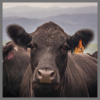
This 59-d study explored the effects of zinc supplementation and an anabolic implant on the performance and carcass quality of Angus-crossbred steers. Researchers provided different levels of zinc to the steers, some of which received a combination growth implant.
Read more
-

Jan
02
Interpretive Summary: Genetic evaluation of productive longevity in a multibreed beef cattle population

Productive longevity (PL) is a concept that blends cow longevity with reproductive performance quantified by the number of calves regularly produced over the defined lifespan. Specifically, PL was defined as the number of calves consecutively and regularly produced from the second to the eighth parity at 9 yr of age, assuming the first calf was produced at roughly 2 yr of age.
Read more
-

Jan
02
Interpretive Summary: Restricted feeding of weight control diets induces weight loss and affects body composition, voluntary physical activity, blood metabolites, hormones, and oxidative stress markers, and fecal metabolites and microbiota of obese cats

The objective of this study was to determine the effects of restricting the intake of weight control diets on weight loss, body composition, voluntary physical activity, serum markers of metabolism and inflammation, and fecal metabolites and microbiota of obese cats.
Read more
-

Jan
02
Interpretive Summary: Cannabidiol can affect morphology, morphometry, enzymatic and microbial activity of rabbit digestive system

The study compares the characteristics of the small and large intestines in 2 groups of healthy meat rabbit feeding or not with a cannabidiol extract for 27 d. Feed intake and final weight are similar for both groups. However, cannabidiol significantly interfered with protein digestion in the small intestine and decreased the microbial activity in the cecum.
Read more
-

Jan
02
Interpretive Summary: Etiology, persistence, and risk factors of subclinical mastitis in a meat-producing sheep flock

Subclinical mastitis is the inflammation of the udder without visible signs. It is typically caused by bacterial infection. This disease can have important economic and welfare impacts on meat-producing flocks, including udder damage, decreased milk yield, impaired lamb growth, and increased ewe and lamb mortality.
Read more
 JanInterpretive Summary: Computer vision algorithms to help decision-making in cattle production
JanInterpretive Summary: Computer vision algorithms to help decision-making in cattle production In recent years, integrating computer vision technologies into precision livestock farming (PLF) management systems have the potential to transform how cattle producers collect, monitor, analyze, and optimize animal production. Livestock production, particularly in cattle farming, encompassing beef and dairy under intensive and extensive production systems, faces numerous challenges ranging from optimizing feeding practices to detecting and managing diseases.
In recent years, integrating computer vision technologies into precision livestock farming (PLF) management systems have the potential to transform how cattle producers collect, monitor, analyze, and optimize animal production. Livestock production, particularly in cattle farming, encompassing beef and dairy under intensive and extensive production systems, faces numerous challenges ranging from optimizing feeding practices to detecting and managing diseases. JanInterpretive Summary: Selenium deficiency modulates necroptosis-mediated intestinal inflammation in broiler through the lncRNAWSF27/miRNA1696/GPX3 axis
JanInterpretive Summary: Selenium deficiency modulates necroptosis-mediated intestinal inflammation in broiler through the lncRNAWSF27/miRNA1696/GPX3 axis Intestinal inflammation caused by selenium (Se) deficiency is one of the causes of broiler diarrhea, which can harm the health of poultry. The addition of Se is the current method to relieve this problem, but it has not fundamentally resolved intestinal inflammation. Therefore, we are looking for new strategies to alleviate intestinal inflammation by studying the specific mechanisms underlying Se deficiency.
Intestinal inflammation caused by selenium (Se) deficiency is one of the causes of broiler diarrhea, which can harm the health of poultry. The addition of Se is the current method to relieve this problem, but it has not fundamentally resolved intestinal inflammation. Therefore, we are looking for new strategies to alleviate intestinal inflammation by studying the specific mechanisms underlying Se deficiency. JanInterpretive Summary: Effects of maternal Cu, Mn, and Zn supplementation from different sources on physiological and productive responses of cows and their offspring
JanInterpretive Summary: Effects of maternal Cu, Mn, and Zn supplementation from different sources on physiological and productive responses of cows and their offspring Trace minerals like Zn, Cu, and Mn play essential roles in fetal development, particularly in the formation of the nervous, reproductive, and immune systems. However, their bioavailability might differ depending on the source offered to the animals. This study investigated the impacts of different sources of trace minerals (hydroxychloride [HDX] vs. organic-complexed [ORG] vs. sulfate [INR]) on maternal and offspring responses.
Trace minerals like Zn, Cu, and Mn play essential roles in fetal development, particularly in the formation of the nervous, reproductive, and immune systems. However, their bioavailability might differ depending on the source offered to the animals. This study investigated the impacts of different sources of trace minerals (hydroxychloride [HDX] vs. organic-complexed [ORG] vs. sulfate [INR]) on maternal and offspring responses. JanInterpretive Summary: Pregnancy affects maternal performance, feed intake, and digestion kinetics parameters in beef heifers
JanInterpretive Summary: Pregnancy affects maternal performance, feed intake, and digestion kinetics parameters in beef heifers Gestation is a physiological condition characterized by a high demand for nutrients to support fetal development, particularly during the late stages of pregnancy. During this time, the ruminal capacity is limited due to the loss of space by the growing pregnant uterus, potentially affecting feed intake.
Gestation is a physiological condition characterized by a high demand for nutrients to support fetal development, particularly during the late stages of pregnancy. During this time, the ruminal capacity is limited due to the loss of space by the growing pregnant uterus, potentially affecting feed intake. JanInterpretive Summary: Effect of multispecies fungal extract supplementation on growth performance, nutrient digestibility, ruminal fermentation, and the rumen microbiome composition of beef cattle fed forage-based diets
JanInterpretive Summary: Effect of multispecies fungal extract supplementation on growth performance, nutrient digestibility, ruminal fermentation, and the rumen microbiome composition of beef cattle fed forage-based diets Enhancing the digestibility of fibrous feeds from cattle diets will benefit the productivity, efficiency, and sustainability of beef cattle operations. These experiments aimed to evaluate the effect of a multispecies fungal extract (MFE) on fiber digestibility and ruminal fermentation; and how these might be associated with growth performance in beef cattle. Diets (forage-based) were offered for ad libitum intake with or without the inclusion of an MFE.
Enhancing the digestibility of fibrous feeds from cattle diets will benefit the productivity, efficiency, and sustainability of beef cattle operations. These experiments aimed to evaluate the effect of a multispecies fungal extract (MFE) on fiber digestibility and ruminal fermentation; and how these might be associated with growth performance in beef cattle. Diets (forage-based) were offered for ad libitum intake with or without the inclusion of an MFE. JanInterpretive Summary: Evaluation of kernel processing and processor type in whole-plant sorghum silage: effects on nutrient digestibility and animal performance in backgrounding beef heifers
JanInterpretive Summary: Evaluation of kernel processing and processor type in whole-plant sorghum silage: effects on nutrient digestibility and animal performance in backgrounding beef heifers These 2 experiments evaluated the effects of feeding whole-plant sorghum silage (WPSS) with different kernel processing strategies on beef heifers’ nutrient digestibility and growth performance. In experiment 1, using 24 individually housed heifers, we contrasted 3 treatments: A) unprocessed (UNP), B) conventionally processed (CONV), and C) shredlage processed (SHRD) silage.
These 2 experiments evaluated the effects of feeding whole-plant sorghum silage (WPSS) with different kernel processing strategies on beef heifers’ nutrient digestibility and growth performance. In experiment 1, using 24 individually housed heifers, we contrasted 3 treatments: A) unprocessed (UNP), B) conventionally processed (CONV), and C) shredlage processed (SHRD) silage. JanThe Giving Herd - ASAS Foundation Newsletter - January 2025
JanThe Giving Herd - ASAS Foundation Newsletter - January 2025 The January Edition of The Giving Herd, an ASAS Foundation Newsletter
The January Edition of The Giving Herd, an ASAS Foundation Newsletter JanMeet Paisli Ivey - 2025 D.C. Animal Agriculture Policy Intern
JanMeet Paisli Ivey - 2025 D.C. Animal Agriculture Policy Intern Meet Paisli Ivey - 2025 D.C. Animal Agriculture Policy Intern
Meet Paisli Ivey - 2025 D.C. Animal Agriculture Policy Intern JanInterpretive Summary: Effects of cashew nutshell extract inclusion into a high-grain finishing diet on methane emissions, nutrient digestibility, and ruminal fermentation in beef steers
JanInterpretive Summary: Effects of cashew nutshell extract inclusion into a high-grain finishing diet on methane emissions, nutrient digestibility, and ruminal fermentation in beef steers In the near future, the U.S. beef industry will face the challenge of meeting a significant increase in global demand for beef, which could contribute to an increase in methane emissions from livestock. To mitigate methane (CH4) emissions, the use of plant secondary metabolites, such as anacardic acid found in cashew nutshell extract (CNSE) has been explored.
In the near future, the U.S. beef industry will face the challenge of meeting a significant increase in global demand for beef, which could contribute to an increase in methane emissions from livestock. To mitigate methane (CH4) emissions, the use of plant secondary metabolites, such as anacardic acid found in cashew nutshell extract (CNSE) has been explored. JanInterpretive Summary: Effect of second iron injection on growth performance, hematological parameters, and fecal microbiome of piglets fed different dietary iron levels
JanInterpretive Summary: Effect of second iron injection on growth performance, hematological parameters, and fecal microbiome of piglets fed different dietary iron levels The study evaluated the effects of a second iron injection given to suckling pigs at 7 to 8 d of age after receiving an initial injection at 2 to 3 d of age and fed diets containing different dietary iron levels in the nursery period on growth, hematological characteristics, serum and liver trace minerals, and fecal microbiome.
The study evaluated the effects of a second iron injection given to suckling pigs at 7 to 8 d of age after receiving an initial injection at 2 to 3 d of age and fed diets containing different dietary iron levels in the nursery period on growth, hematological characteristics, serum and liver trace minerals, and fecal microbiome. JanInterpretive Summary: Graded supplemental choline chloride fed throughout the grow and finish periods elicited minimal influence on growth performance and carcass characteristics of pigs in a commercial setting
JanInterpretive Summary: Graded supplemental choline chloride fed throughout the grow and finish periods elicited minimal influence on growth performance and carcass characteristics of pigs in a commercial setting Supplemental choline has been shown to exert positive effects on growth performance and carcass characteristics in mammalian and avian species. However, limited research has focused on choline supplementation during the grow-finish period of pigs managed in a commercial context.
Supplemental choline has been shown to exert positive effects on growth performance and carcass characteristics in mammalian and avian species. However, limited research has focused on choline supplementation during the grow-finish period of pigs managed in a commercial context. JanInterpretive Summary: Development of an indigestible dietary protein index to investigate the effects of dietary protein content in postweaned pigs
JanInterpretive Summary: Development of an indigestible dietary protein index to investigate the effects of dietary protein content in postweaned pigs Increased dietary protein (DP) may predispose weanling pigs to health risks and reduced performance due to the negative effects on intestinal health and increased pathogen proliferation. However, since the negative impacts of DP are mostly due to the amount of protein flow into the hindgut, dietary indigestible dietary protein (IDP) content may better explain the potential effects of proteolytic fermentation on nursery pigs compared to DP.
Increased dietary protein (DP) may predispose weanling pigs to health risks and reduced performance due to the negative effects on intestinal health and increased pathogen proliferation. However, since the negative impacts of DP are mostly due to the amount of protein flow into the hindgut, dietary indigestible dietary protein (IDP) content may better explain the potential effects of proteolytic fermentation on nursery pigs compared to DP. JanInterpretive Summary: Impact of different feed intake levels on intestinal morphology and epithelial cell differentiation in piglets
JanInterpretive Summary: Impact of different feed intake levels on intestinal morphology and epithelial cell differentiation in piglets After weaning, the nutrient intake of piglets decreases significantly in the first few days due to changes in environment and diet. During periods of dietary decline, which results in villous atrophy, crypt hyperplasia, and expression of proinflammatory cytokines, piglets must adjust intestinal proliferation and differentiation to adapt to weaning stress.
After weaning, the nutrient intake of piglets decreases significantly in the first few days due to changes in environment and diet. During periods of dietary decline, which results in villous atrophy, crypt hyperplasia, and expression of proinflammatory cytokines, piglets must adjust intestinal proliferation and differentiation to adapt to weaning stress. JanJim Lauderdale's ASAS Journey -"More 'moo' than math"
JanJim Lauderdale's ASAS Journey -"More 'moo' than math" Jim Lauderdale's ASAS Journey
Jim Lauderdale's ASAS Journey JanInterpretive Summary: Replacing sulfate with hydroxychloride sources of trace minerals modulated the growth performance and plasma indicators of inflammation and energy metabolism in beef heifers during periods of feed restriction...
JanInterpretive Summary: Replacing sulfate with hydroxychloride sources of trace minerals modulated the growth performance and plasma indicators of inflammation and energy metabolism in beef heifers during periods of feed restriction... This study investigated how 2 sources (sulfate vs. hydroxychloride) of copper, manganese, and zinc affect the growth and plasma indicators of inflammation and energy metabolism of Bos indicus beef heifers under various nutritional challenges. Nelore heifers were monitored through different periods of 28 d each...
This study investigated how 2 sources (sulfate vs. hydroxychloride) of copper, manganese, and zinc affect the growth and plasma indicators of inflammation and energy metabolism of Bos indicus beef heifers under various nutritional challenges. Nelore heifers were monitored through different periods of 28 d each... JanInterpretive Summary: Effects of increasing supplemental zinc to non-implanted and implanted finishing steers
JanInterpretive Summary: Effects of increasing supplemental zinc to non-implanted and implanted finishing steers This 59-d study explored the effects of zinc supplementation and an anabolic implant on the performance and carcass quality of Angus-crossbred steers. Researchers provided different levels of zinc to the steers, some of which received a combination growth implant.
This 59-d study explored the effects of zinc supplementation and an anabolic implant on the performance and carcass quality of Angus-crossbred steers. Researchers provided different levels of zinc to the steers, some of which received a combination growth implant. JanInterpretive Summary: Genetic evaluation of productive longevity in a multibreed beef cattle population
JanInterpretive Summary: Genetic evaluation of productive longevity in a multibreed beef cattle population Productive longevity (PL) is a concept that blends cow longevity with reproductive performance quantified by the number of calves regularly produced over the defined lifespan. Specifically, PL was defined as the number of calves consecutively and regularly produced from the second to the eighth parity at 9 yr of age, assuming the first calf was produced at roughly 2 yr of age.
Productive longevity (PL) is a concept that blends cow longevity with reproductive performance quantified by the number of calves regularly produced over the defined lifespan. Specifically, PL was defined as the number of calves consecutively and regularly produced from the second to the eighth parity at 9 yr of age, assuming the first calf was produced at roughly 2 yr of age. JanInterpretive Summary: Restricted feeding of weight control diets induces weight loss and affects body composition, voluntary physical activity, blood metabolites, hormones, and oxidative stress markers, and fecal metabolites and microbiota of obese cats
JanInterpretive Summary: Restricted feeding of weight control diets induces weight loss and affects body composition, voluntary physical activity, blood metabolites, hormones, and oxidative stress markers, and fecal metabolites and microbiota of obese cats The objective of this study was to determine the effects of restricting the intake of weight control diets on weight loss, body composition, voluntary physical activity, serum markers of metabolism and inflammation, and fecal metabolites and microbiota of obese cats.
The objective of this study was to determine the effects of restricting the intake of weight control diets on weight loss, body composition, voluntary physical activity, serum markers of metabolism and inflammation, and fecal metabolites and microbiota of obese cats. JanInterpretive Summary: Cannabidiol can affect morphology, morphometry, enzymatic and microbial activity of rabbit digestive system
JanInterpretive Summary: Cannabidiol can affect morphology, morphometry, enzymatic and microbial activity of rabbit digestive system The study compares the characteristics of the small and large intestines in 2 groups of healthy meat rabbit feeding or not with a cannabidiol extract for 27 d. Feed intake and final weight are similar for both groups. However, cannabidiol significantly interfered with protein digestion in the small intestine and decreased the microbial activity in the cecum.
The study compares the characteristics of the small and large intestines in 2 groups of healthy meat rabbit feeding or not with a cannabidiol extract for 27 d. Feed intake and final weight are similar for both groups. However, cannabidiol significantly interfered with protein digestion in the small intestine and decreased the microbial activity in the cecum. JanInterpretive Summary: Etiology, persistence, and risk factors of subclinical mastitis in a meat-producing sheep flock
JanInterpretive Summary: Etiology, persistence, and risk factors of subclinical mastitis in a meat-producing sheep flock Subclinical mastitis is the inflammation of the udder without visible signs. It is typically caused by bacterial infection. This disease can have important economic and welfare impacts on meat-producing flocks, including udder damage, decreased milk yield, impaired lamb growth, and increased ewe and lamb mortality.
Subclinical mastitis is the inflammation of the udder without visible signs. It is typically caused by bacterial infection. This disease can have important economic and welfare impacts on meat-producing flocks, including udder damage, decreased milk yield, impaired lamb growth, and increased ewe and lamb mortality.



